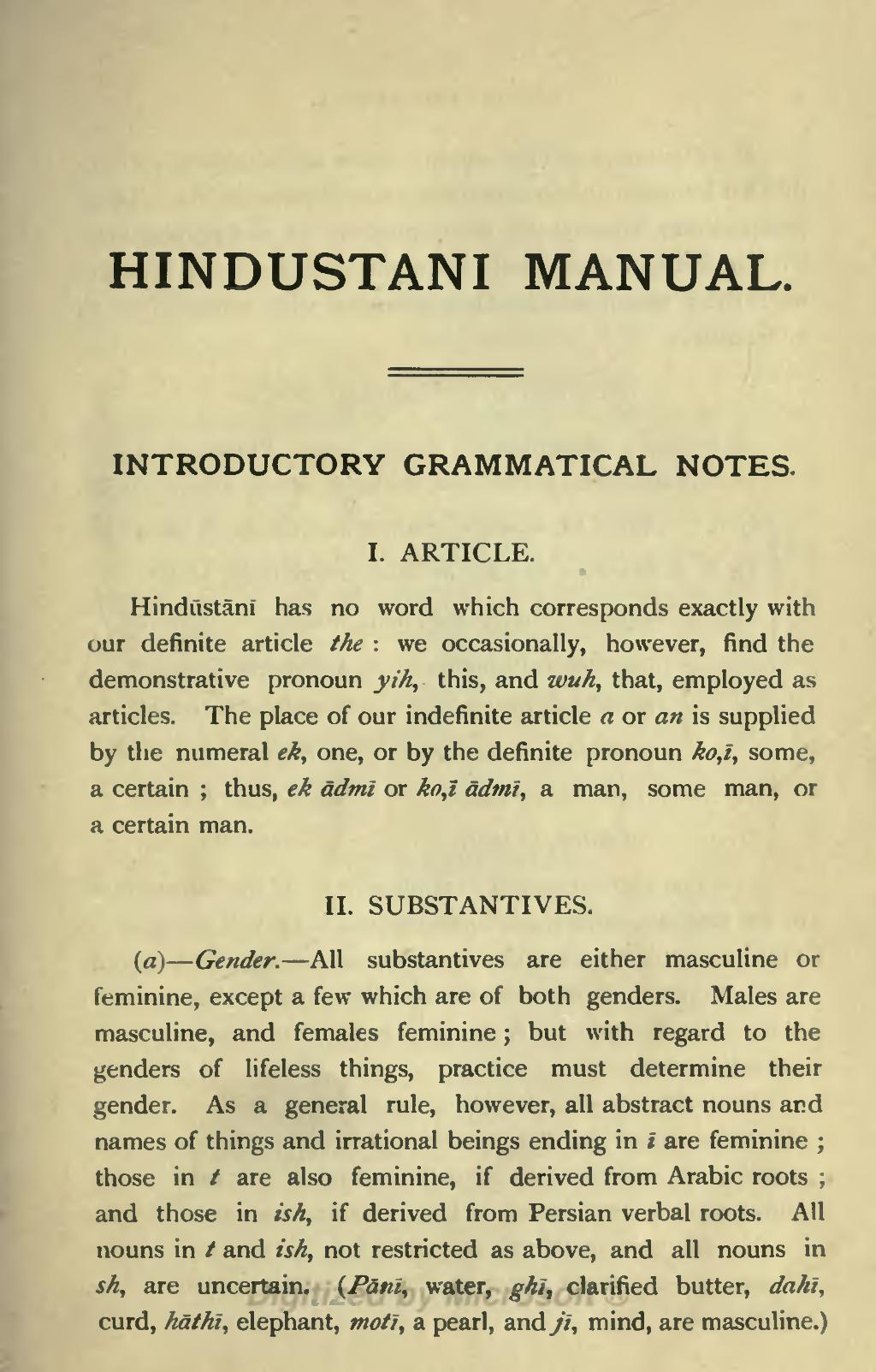HINDUSTANI MANUAL.
INTRODUCTORY GRAMMATICAL NOTES.
I. ARTICLE.
Hindustani has no word which corresponds exactly with our definite article the: we occasionally, however, find the demonstrative pronoun yih, this, and wuh, that, employed as articles. The place of our indefinite article a or an is supplied by the numeral ek, one, or by the definite pronoun ko,í, some, a certain ; thus, ek ádmí or ko,í ádmí, a man, some man, or a certain man.
II. SUBSTANTIVES.
(a) Gender. All substantives are either masculine or Feminine, except a few which are of both genders. Males are masculine, and females feminine ; but with regard to the genders of lifeless things, practice must determine their gender. As a general rule, however, all abstract nouns and names of things and irrational beings ending in í are feminine ; those in t are also feminine, if derived from Arabic roots ; and those in ish, if derived from Persian verbal roots. All nouns in t and ish, not restricted as above, and all nouns in sh, are uncertain. (Pání, water, ghí, clarified butter, dahí, curd, háthí, elephant, motí, a pearl, and jí, mind, are masculine.)
